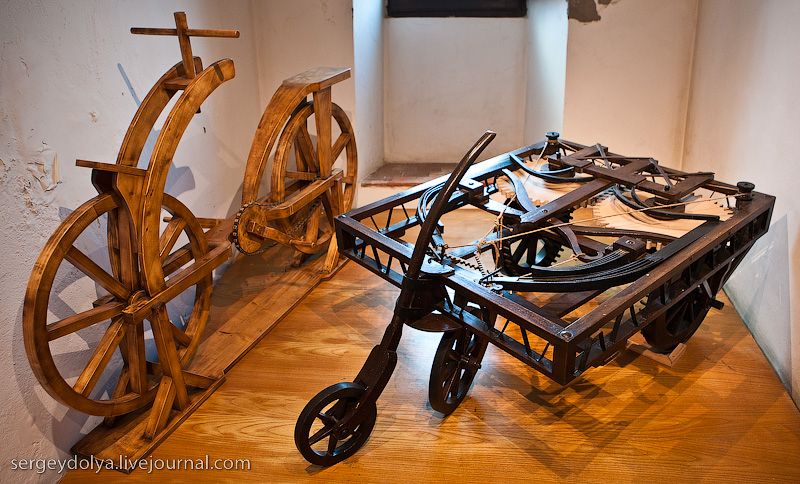|
|
Leonardo Da Vinci Castle
|
Although France has been described as "the heartland of medieval architecture", the English were at the forefront of castle architecture in the 12th century. French historian François Gebelin wrote: "The great revival in military architecture was led, as one would naturally expect, by the powerful kings and princes of the time; by the sons of William the Conqueror and their descendants, the Plantagenets, when they became dukes of Normandy. These were the men who built all the most typical twelfth-century fortified castles remaining to-day". Despite this, by the beginning of the 15th century, the rate of castle construction in England and Wales went into decline. The new castles were generally of a lighter build than earlier structures and presented few innovations, although strong sites were still created such as that of Raglan in Wales. At the same time, French castle architecture came to the fore and led the way in the field of medieval fortifications. Across Europe – particularly the Baltic, Germany, and Scotland – castles were built well into the 16th century.
• Advent of gunpowder
Artillery powered by gunpowder was introduced to Europe in the 1320s and spread quickly. Handguns, which were initially unpredictable and inaccurate weapons, were not recorded until the 1380s. Castles were adapted to allow small artillery pieces – averaging between 19.6 and 22 kg (43 and 49 lb) – to fire from towers. These guns were too heavy for a man to carry and fire, but if he supported the butt end and rested the muzzle on the edge of the gun port he could fire the weapon. The gun ports developed in this period show a unique feature, that of a horizontal timber across the opening. A hook on the end of the gun could be latched over the timber so the gunner did not have to take the full recoil of the weapon. This adaptation is found across Europe, and although the timber rarely survives, there is an intact example at Castle Doornenburg in the Netherlands. Gunports were keyhole shaped, with a circular hole at the bottom for the weapon and a narrow slit on top to allow the gunner to aim. This form is very common in castles adapted for guns, found in Egypt, Italy, Scotland, and Spain, and elsewhere in between. Other types of port, though less common, were horizontal slits – allowing only lateral movement – and large square openings, which allowed greater movement. The use of guns for defence gave rise to artillery castles, such as that of Château de Ham in France. Defences against guns were not developed until a later stage. Ham is an example of the trend for new castles to dispense with earlier features such as machicolations, tall towers, and crenellations.
Bigger guns were developed, and in the 15th century became an alternative to siege engines such as the trebuchet. The benefits of large guns over trebuchets – the most effective siege engine of the Middle Ages before the advent of gunpowder – were those of a greater range and power. In an effort to make them more effective, guns were made ever bigger, although this hampered their ability to reach remote castles. By the 1450s guns were the preferred siege weapon, and their effectiveness was demonstrated by Mehmed II at the Fall of Constantinople. The response towards more effective cannons was to build thicker walls and to prefer round towers, as the curving sides were more likely to deflect a shot than a flat surface. While this sufficed for new castles, pre-existing structures had to find a way to cope with being battered by cannon. An earthen bank could be piled behind a castle's curtain wall to absorb some of the shock of impact. Often, castles constructed before the age of gunpowder were incapable of using guns as their wall-walks were too narrow. A solution to this was to pull down the top of a tower and to fill the lower part with the rubble to provide a surface for the guns to fire from. Lowering the defences in this way had the effect of making them easier to scale with ladders. A more popular alternative defence, which avoided damaging the castle, was to establish bulwarks beyond the castle's defences. These could be built from earth or stone and were used to mount weapons.
|
|









